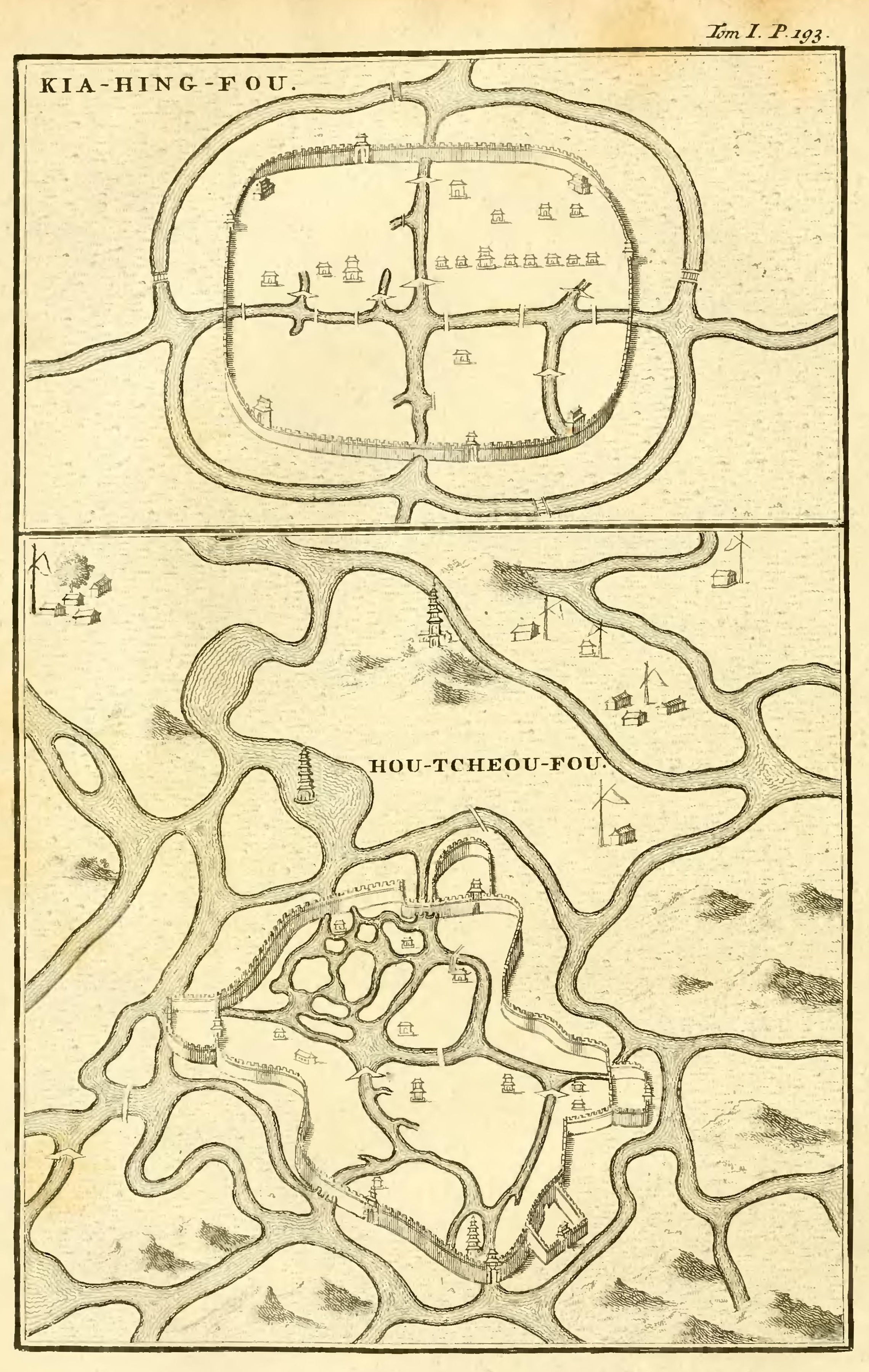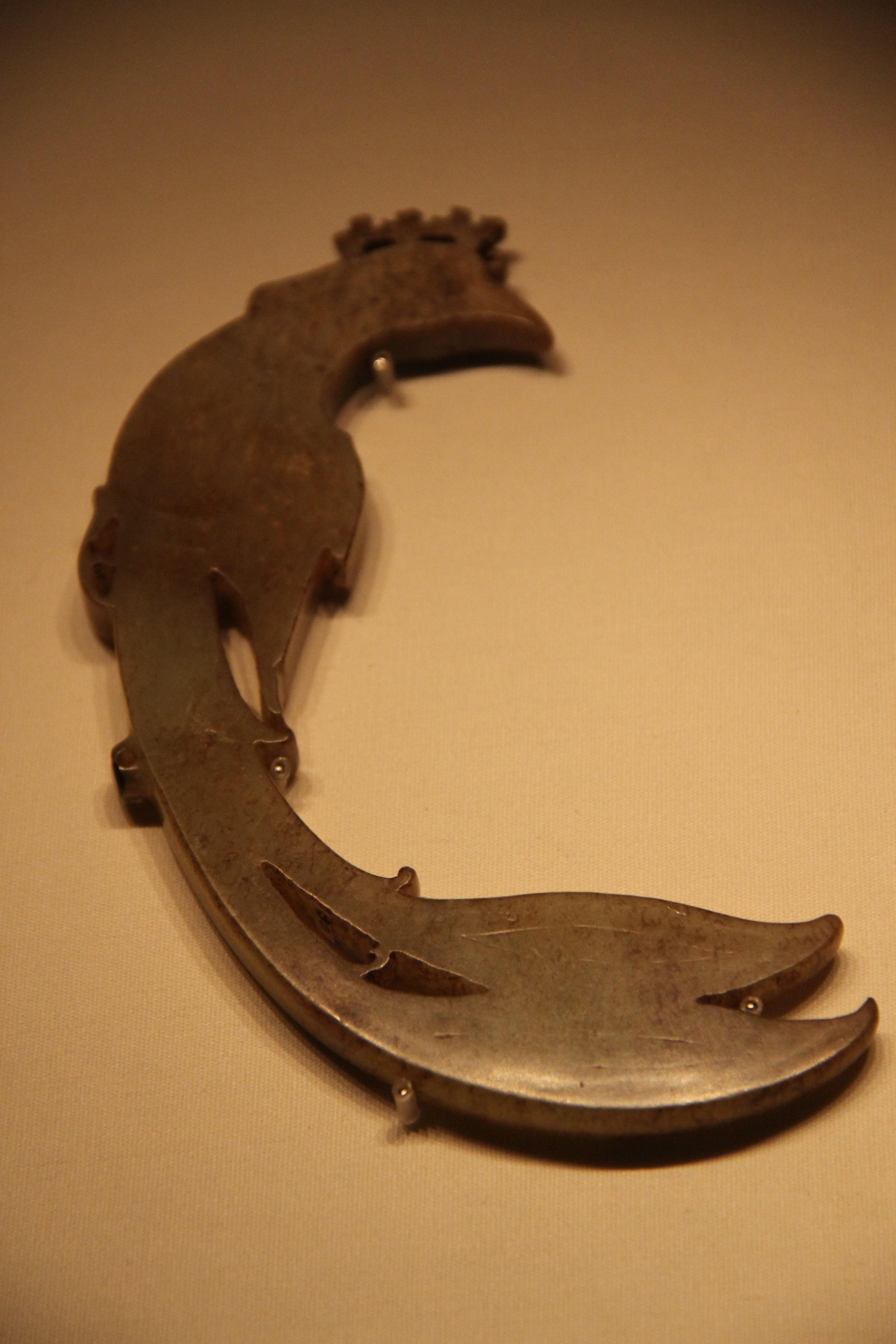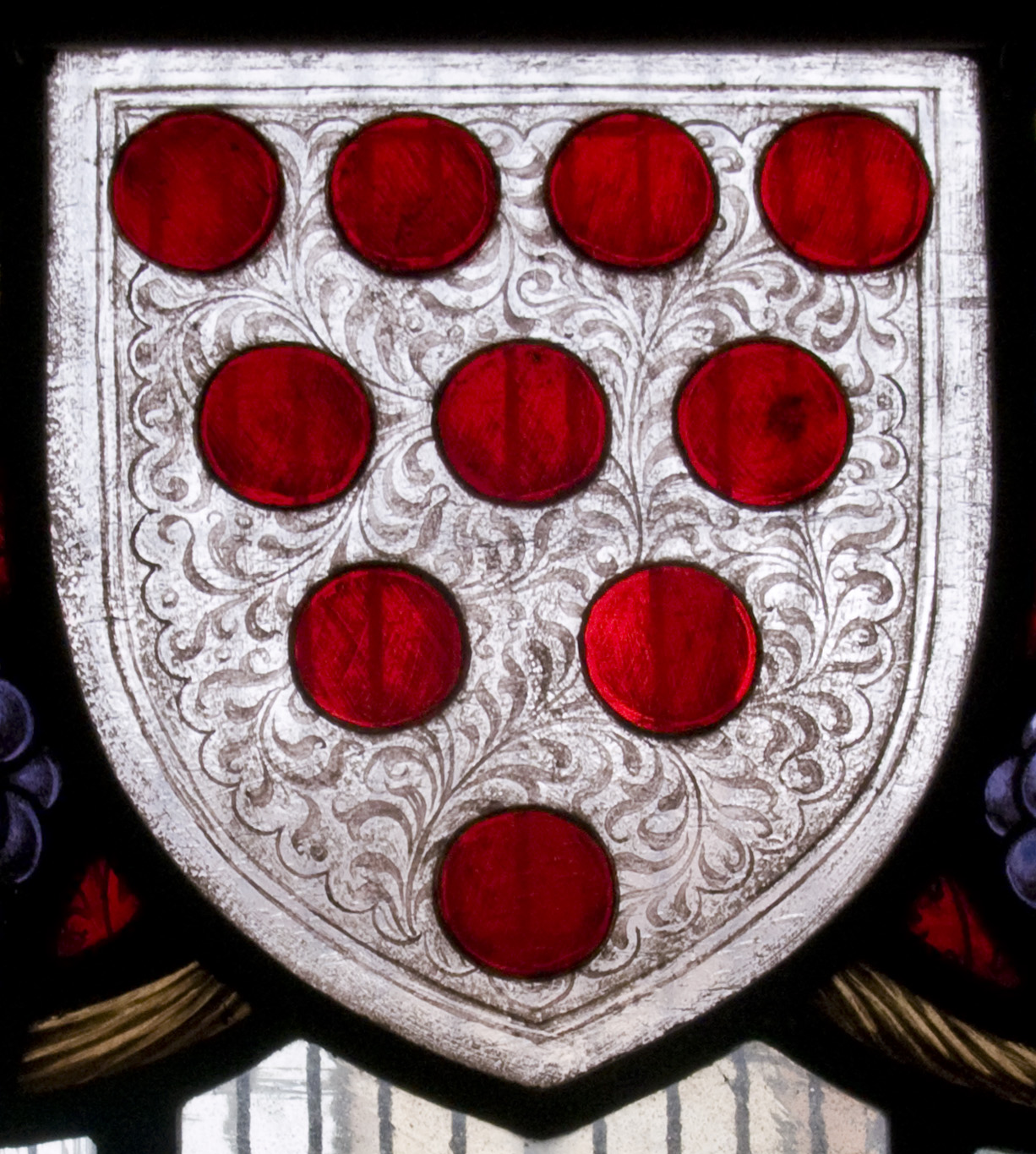|
Carved Lacquerware
Carved lacquer or Qidiao () is a distinctive Chinese form of decorated lacquerware. While lacquer has been used in China for at least 3,000 years, the technique of carving into very thick coatings of it appears to have been developed in the 12th century CE. It is extremely time-consuming to produce, and has always been a luxury product, essentially restricted to China, though imitated in Japanese lacquer in somewhat different styles. The producing process is called Diaoqi (, carving lacquer). Though most surviving examples are from the Ming and Qing dynasties, the main types of subject matter for the carvings were all begun under the Song dynasty, and the development of both these and the technique of carving were essentially over by the early Ming. These types were the abstract ''guri'' or Sword-Pommel pattern, figures in a landscape, and birds and plants. To these some designs with religious symbols, animals, auspicious characters ''(right)'' and imperial dragons can be a ... [...More Info...] [...Related Items...] OR: [Wikipedia] [Google] [Baidu] |
Lacquered Box With Character For Luck, Qianlong Period
Lacquer is a type of hard and usually shiny coating or finish applied to materials such as wood or metal. It is most often made from resin extracted from trees and waxes and has been in use since antiquity. Asian lacquerware, which may be called "true lacquer", are objects coated with the treated, dyed and dried sap of ''Toxicodendron vernicifluum'' or related trees, applied in several coats to a base that is usually wood. This dries to a very hard and smooth surface layer which is durable, waterproof, and attractive in feel and look. Asian lacquer is sometimes painted with pictures, inlaid with shell and other materials, or carved, as well as dusted with gold and given other further decorative treatments. In modern techniques, lacquer means a range of clear or pigmented coatings that dry by solvent evaporation to produce a hard, durable finish. The finish can be of any sheen level from ultra matte to high gloss, and it can be further polished as required. Lacquer finishes ... [...More Info...] [...Related Items...] OR: [Wikipedia] [Google] [Baidu] |
Iconography
Iconography, as a branch of art history, studies the identification, description and interpretation of the content of images: the subjects depicted, the particular compositions and details used to do so, and other elements that are distinct from artistic style. The word ''iconography'' comes from the Greek ("image") and ("to write" or ''to draw''). A secondary meaning (based on a non-standard translation of the Greek and Russian equivalent terms) is the production or study of the religious images, called "icons", in the Byzantine and Orthodox Christian tradition (see Icon). This usage is mostly found in works translated from languages such as Greek or Russian, with the correct term being "icon painting". In art history, "an iconography" may also mean a particular depiction of a subject in terms of the content of the image, such as the number of figures used, their placing and gestures. The term is also used in many academic fields other than art history, for example semiotics ... [...More Info...] [...Related Items...] OR: [Wikipedia] [Google] [Baidu] |
Jiaxing
Jiaxing (), alternately romanized as Kashing, is a prefecture-level city in northern Zhejiang province, China. Lying on the Grand Canal of China, Jiaxing borders Hangzhou to the southwest, Huzhou to the west, Shanghai to the northeast, and the province of Jiangsu to the north. As of the 2020 census, its population was 5,400,868 and its built-up (or metro) area made of 2 urban districts was home to 1,518,654 inhabitants. Administration The prefecture-level city of Jiaxing administers 7 county-level divisions, including 2 districts, 3 county-level cities and 2 counties. These are further divided into 75 township-level divisions, including 60 towns, 2 townships and 13 subdistricts. History Known as a place *Spring and Autumn period: Jiaxing is known as Zuili (Drunken Plums) and is an important city in the state of Yuè. Known as a county *210 BC: Qin Shi Huang changed the name of Jiaxing from Changshui District () to Youquan (). *231: Wild rice () of Jiaxing informed Sun ... [...More Info...] [...Related Items...] OR: [Wikipedia] [Google] [Baidu] |
Dish With Roses LACMA M
Dish, dishes or DISH may refer to: Culinary * Dish (food), something prepared to be eaten * Dishware, plates and bowls for eating, cutting boards, silverware Communications * Dish antenna a type of antenna * Dish Network, a satellite television provider in North America * Dish TV, a satellite television provider in India * Satellite dish, an antenna for receiving satellite signals * Stanford Dish, a U.S. Government-owned radio-telescope at Stanford University Arts, entertainment, and media * ''The Dish'' (TV series), an American television show * ''The Dish'', an Australian film * DISH (band), a Japanese band * Dish (American band), an American alternative rock band * "Dish", a 2016 single by Chancellor Other uses * Dish, Texas, a town in Denton County, Texas, United States * Diffuse idiopathic skeletal hyperostosis, a form of arthritis * Dish of a bicycle wheel See also * Disch, surname * Dyche, surname * Diš (cuneiform), a sign in cuneiform writing * Dishdish, a villa ... [...More Info...] [...Related Items...] OR: [Wikipedia] [Google] [Baidu] |
Kamakura
is a city in Kanagawa Prefecture, Japan. Kamakura has an estimated population of 172,929 (1 September 2020) and a population density of 4,359 persons per km² over the total area of . Kamakura was designated as a city on 3 November 1939. Kamakura was the ''de facto'' capital of Japan from 1185 to 1333 as the seat of the Kamakura Shogunate, and became the nation's most populous settlement during the Kamakura period. Kamakura is a popular domestic tourist destination in Japan as a coastal city with a high number of seasonal festivals, as well as ancient Buddhist and Shinto shrines and temples. Geography Surrounded to the north, east, and west by hills and to the south by the open water of Sagami Bay, Kamakura is a natural fortress. Before the construction of several tunnels and modern roads that now connect it to Fujisawa, Ofuna ( ja) and Zushi, on land it could be entered only through narrow artificial passes, among which the seven most important were called , a name some ... [...More Info...] [...Related Items...] OR: [Wikipedia] [Google] [Baidu] |
Engaku-ji
, or Engaku-ji (円覚寺), is one of the most important Zen Buddhist temple complexes in Japan and is ranked second among Kamakura's Five Mountains. It is situated in the city of Kamakura, in Kanagawa Prefecture to the south of Tokyo. Founded in 1282 (Kamakura period, the temple maintains the classical Japanese Zen monastic design, and both the Shariden and the are designated National Treasures. Engaku-ji is one of the twenty-two historic sites included in Kamakura's proposal for inclusion in UNESCO's World Heritage Sites. It is located in Kita-Kamakura, very close to Kita-Kamakura Station on the Yokosuka Line, and indeed the railway tracks cut across the formal entrance to the temple compound, which is by a path beside a pond which is crossed by a small bridge. History The temple was founded in 1282 by a Chinese Zen monk Mugaku Sōgen (1226-1286) at the request of the then ruler of Japan, the regent Hōjō Tokimune after he had repelled a Mongolian invasion in the pe ... [...More Info...] [...Related Items...] OR: [Wikipedia] [Google] [Baidu] |
Jessica Rawson
Dame Jessica Mary Rawson, (born 20 January 1943) is an English art historian, curator and sinologist. She is also an academic administrator, specialising in Chinese art. After many years at the British Museum, she was Warden (head) of Merton College, Oxford, from 1994 until her retirement in 2010. She served as pro-vice-chancellor at University of Oxford from 2006 for a term of five years. Biography Rawson's academic background is in Sinology with a particular research focus on the cosmology of the Han period (206 BC-AD 220) and its relation to tombs and their decoration. Educated at St Paul's Girls' School in Hammersmith, West London, New Hall, Cambridge and the University of London, Rawson began her career in the civil service. Between 1976 and 1994, she served as Deputy Keeper and then Keeper of the Department of Oriental Antiquities at the British Museum. From 1994 to 2010 she was Warden of Merton College, Oxford, and from 2006 to 2011 she served as pro-vice-chancellor ... [...More Info...] [...Related Items...] OR: [Wikipedia] [Google] [Baidu] |
Fenghuang
''Fènghuáng'' (, ) are mythological birds found in Sinospheric mythology that reign over all other birds. The males were originally called ''fèng'' and the females ''huáng'', but such a distinction of gender is often no longer made and they are blurred into a single feminine entity so that the bird can be paired with the Chinese dragon, which is traditionally deemed male. It is known under similar names in various other languages ( Japanese: ; vi, phượng hoàng, italics=no or ; Korean: ). In the Western world, it is commonly called the Chinese phoenix or simply phoenix, although mythological similarities with the Western phoenix are superficial. Appearance A common depiction of fenghuang was of it attacking snakes with its talons and its wings spread. According to the ''Erya'''s chapter 17 ''Shiniao'', fenghuang is made up of the beak of a rooster, the face of a swallow, the forehead of a fowl, the neck of a snake, the breast of a goose, the back of a tortoise ... [...More Info...] [...Related Items...] OR: [Wikipedia] [Google] [Baidu] |
Diapering
Diaper is any of a wide range of decorative patterns used in a variety of works of art, such as stained glass, heraldic shields, architecture, and silverwork. Its chief use is in the enlivening of plain surfaces. Etymology For the full etymology, see "". The Oxford dictionary gives the Greek ''dia'' for "cross" as in "diamond" or "diagonal"; and ''aspros'', Greek for "white". A white diamond or white cloth is used on the diagonal, hence the diagonal lattice or reticulation in patterning. In art In architecture and other decorative arts, diaper is applied as a decorative treatment of a surface with a repeat pattern of squares (chequers), rectangles, or lozenges. Diaper was particularly used in mediaeval stained glass to increase the vividness of a coloured pane, for example the field in a shield of arms. A stone wall may be decorated with such a pattern sculpted in relief; in brickwork the effect may be achieved by using bricks of different colours, or by allowing certain bri ... [...More Info...] [...Related Items...] OR: [Wikipedia] [Google] [Baidu] |
Brocade
Brocade is a class of richly decorative shuttle-woven fabrics, often made in colored silks and sometimes with gold and silver threads. The name, related to the same root as the word "broccoli", comes from Italian ''broccato'' meaning "embossed cloth", originally past participle of the verb ''broccare'' "to stud, set with nails", from ''brocco'', "small nail", from Latin ''broccus'', "projecting, pointed". Brocade is typically woven on a draw loom. It is a supplementary weft technique; that is, the ornamental brocading is produced by a supplementary, non-structural, weft in addition to the standard weft that holds the warp threads together. The purpose of this is to give the appearance that the weave was actually embroidered on. In Guatemala, brocade is the most popular technique used to decorate fabric woven by Maya weavers on backstrap looms. Ornamental features in brocade are emphasized and wrought as additions to the main fabric, sometimes stiffening it, though more fre ... [...More Info...] [...Related Items...] OR: [Wikipedia] [Google] [Baidu] |
Willow Pattern
The Willow pattern is a distinctive and elaborate chinoiserie pattern used on ceramic tableware. It became popular at the end of the 18th century in England when, in its standard form, it was developed by English ceramic artists combining and adapting motifs inspired by fashionable hand-painted blue-and-white wares imported from China. Its creation occurred at a time when mass-production of decorative tableware, at Stoke-on-Trent and elsewhere, was already making use of engraved and printed glaze transfers, rather than hand-painting, for the application of ornament to standardized vessels ('' transfer ware''). Many different Chinese-inspired landscape patterns were at first produced in this way, both on bone china or porcellanous wares, and on white earthenware or pearlware. The Willow pattern became the most popular and persistent of them, and in various permutations has remained in production to the present day. Characteristically the background colour is white and the image ... [...More Info...] [...Related Items...] OR: [Wikipedia] [Google] [Baidu] |
Chinoiserie
(, ; loanword from French ''wikt:chinoiserie#French, chinoiserie'', from ''wikt:chinois#French, chinois'', "Chinese"; ) is the European interpretation and imitation of China, Chinese and other East Asia, East Asian artistic traditions, especially in the decorative arts, garden design, architecture, literature, theatre, and music. The aesthetic of Chinoiserie has been expressed in different ways depending on the region. Its acknowledgement derives from the current of Orientalism, which studied Far East cultures from a historical, philological, anthropological, philosophical and religious point of view. First appearing in the 17th century, this trend was popularized in the 18th century due to the rise in trade with China and the rest of East Asia. As a style, chinoiserie is related to the Rococo style. Both styles are characterized by exuberant decoration, asymmetry, a focus on materials, and stylized nature and subject matter that focuses on leisure and pleasure. Chinoiserie focu ... [...More Info...] [...Related Items...] OR: [Wikipedia] [Google] [Baidu] |








